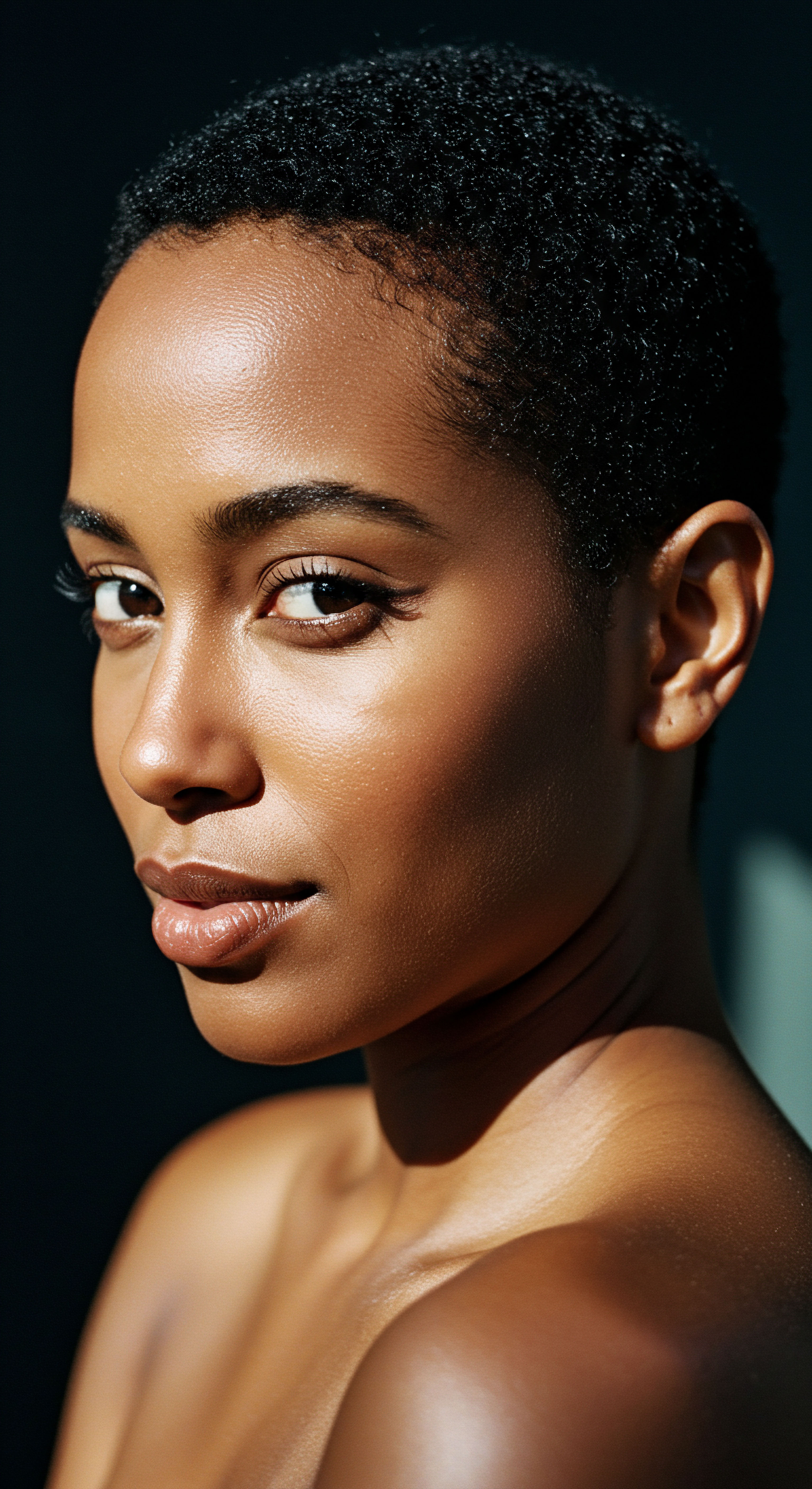
Roots
The very air we breathe, the water that sustains us, holds secrets whispered into the delicate structure of our hair. For those with textured strands, a silent conversation plays out daily between the environment and each coil, curl, or wave. We often consider the visible aspects of hair care—the art of styling, the gentle application of products—yet beneath the surface, an unseen drama unfolds.
It is a dialogue of elemental forces, particularly between water’s mineral content and hair’s inherent porosity. Understanding this fundamental interaction opens a pathway to profound hair health, revealing why some strands thirst while others seem to resist, and how the very water we use shapes our hair’s destiny.

What is Hair Porosity
Hair porosity refers to the hair’s capacity to absorb and hold moisture. This characteristic is determined by the condition of the hair’s outermost layer, the cuticle. Think of the cuticle as tiny, overlapping scales on a fish or shingles on a roof. When these scales lie flat and tight, the hair has low porosity.
Water and products struggle to penetrate, often sitting on the surface. Conversely, when these scales are raised or lifted, the hair displays high porosity, readily absorbing moisture but losing it just as quickly. Normal porosity exists in the middle, with cuticles that open and close as needed, allowing for balanced absorption and retention.
The distinction in porosity is not merely academic; it dictates how hair reacts to everything it encounters, from a morning mist to a conditioning treatment. For textured hair, this takes on a particular significance. The unique helical shape and varying diameters of textured hair strands naturally create more points where the cuticle can be lifted or compromised, making porosity a central character in its care story.

Understanding Minerals in Water
Our water, whether from the tap or a natural spring, carries a hidden cargo ❉ dissolved minerals. These are often the very same minerals that nourish our bodies, such as calcium, magnesium, iron, and copper. While harmless to drink, their presence in water used for washing hair introduces a different dynamic.
Water classified as “hard” contains a high concentration of these minerals, particularly calcium and magnesium. Soft water, by contrast, has lower levels.
When hard water meets hair, these positively charged mineral ions are drawn to the negatively charged surface of the hair shaft. This attraction creates a bond, allowing minerals to settle upon and even within the hair’s structure. Over time, this deposition forms a coating, a subtle film that can alter the hair’s feel and appearance. This mineral film is not easily rinsed away and can accumulate with each wash, gradually building up on the hair’s surface and potentially inside the hair shaft.
Hair porosity, dictated by cuticle condition, governs how hair absorbs and retains moisture.

Why Textured Hair and Porosity Matter
Textured hair, with its diverse patterns of curls, coils, and kinks, presents a larger surface area and more complex cuticle structure compared to straight hair. Each twist and turn creates additional opportunities for the cuticle to lift, making textured hair inherently more susceptible to the effects of environmental factors, including mineral accumulation. This increased surface area means more potential sites for mineral ions to adhere, creating a greater likelihood of build-up.
The very architecture of textured hair, designed for strength and resilience in its natural state, can paradoxically render it more vulnerable to external aggressors. The cuticle layers, while protective, can become compromised, particularly in areas where the hair strand bends or twists sharply. When these areas are repeatedly exposed to hard water, the mineral deposits can exacerbate cuticle lifting, leading to a cycle of dryness and diminished flexibility. This interplay between hair’s natural form and environmental elements shapes its daily experience.

Ritual
As we move from the foundational understanding of hair’s elemental composition, our gaze turns to the daily practices, the intimate rituals, that shape the health and vitality of textured hair. The choices made in the washroom, the gentle touch of hands, the selection of elixirs—these are not mere habits, but intentional acts that either protect or inadvertently challenge the delicate balance of porosity and mineral interaction. This section explores how our routines, when attuned to the nuances of porosity, can become powerful tools in managing mineral accumulation and preserving the intrinsic beauty of our strands.

The Daily Dialogue with Porosity
The way we cleanse and condition our hair forms the bedrock of our care ritual. For hair with varying porosities, this dialogue takes on different tones.
- Low Porosity Hair ❉ This hair type often feels resistant to water, with droplets beading on the surface. Shampoos for low porosity hair often feature lighter formulations, avoiding heavy butters and oils that can further coat the strand. Clarifying shampoos, used judiciously, help remove surface build-up that prevents moisture from entering. When conditioning, gentle warmth can help lift the tightly bound cuticles, allowing beneficial ingredients to penetrate more deeply.
- High Porosity Hair ❉ This hair type readily absorbs water, yet also loses it with equal speed, often feeling dry or rough. For high porosity hair, moisturizing shampoos that contain humectants and emollients are beneficial. Deep conditioners are essential, often containing proteins to temporarily patch gaps in the cuticle and reduce excessive moisture loss. Leave-in conditioners and heavier stylers provide a crucial barrier, sealing in hydration.
- Normal Porosity Hair ❉ This hair type responds well to a balanced approach. It absorbs and retains moisture without significant difficulty. Regular cleansing and conditioning with hydrating products usually suffice, with occasional clarifying as needed to remove styling product accumulation.
The effectiveness of any product hinges upon its ability to interact with the hair’s cuticle. If mineral deposits coat the hair, even the most thoughtfully chosen cleansing or conditioning agent may struggle to perform its intended function, leading to a frustrating cycle of perceived dryness or lack of vibrancy.
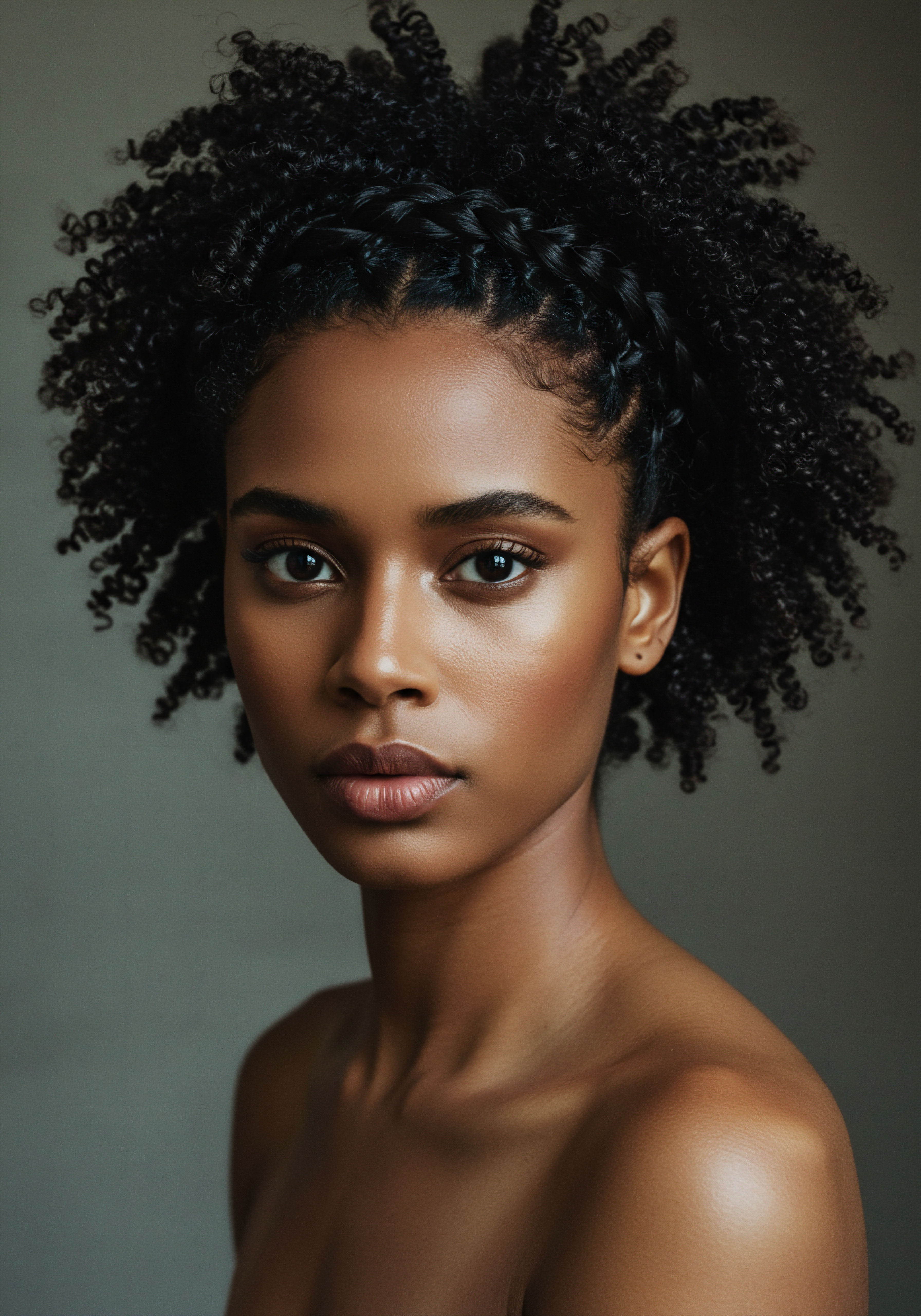
Mineral Accumulation ❉ A Closer Gaze
The seemingly innocuous act of washing hair with hard water carries a hidden consequence ❉ the gradual deposition of minerals. Calcium and magnesium, the primary culprits in hard water, bond to the hair shaft, creating a microscopic film. This film can cause the hair to feel rough, dull, and resistant to moisture.
Consider the common scenario of a showerhead encrusted with white residue; a similar, albeit invisible, process occurs on hair. This mineral coating acts as a physical barrier, preventing water and nourishing ingredients from truly reaching the hair’s inner cortex. For textured hair, where hydration is paramount for flexibility and definition, this barrier is particularly problematic. The hair may feel perpetually dry, even after conditioning, because the moisture struggles to cross the mineral-laden threshold.
Regular cleansing and conditioning, tailored to hair porosity, are fundamental in managing mineral deposition.
Furthermore, the presence of these minerals can interact with hair care products themselves. Fatty acids present in some conditioners and oils can react with hard water minerals, forming stubborn residues that cling to the hair, further compounding the problem. This chemical reaction can diminish the efficacy of even high-quality products, leading to frustration and a perception that products are not working as they should.

Mitigating Mineral Adherence
To counteract the effects of mineral accumulation, specific practices can be woven into the hair care ritual.

How Do Chelating Shampoos Work?
Chelating Shampoos are formulated with agents that bind to mineral ions, allowing them to be rinsed away. These specialized cleansers contain ingredients such as EDTA (ethylenediaminetetraacetic acid) or phytic acid, which act like tiny magnets, attracting and holding onto mineral deposits so they can be washed down the drain. While highly effective, their strength means they should be used with intention, not necessarily as an everyday shampoo, particularly for those with already delicate or highly porous strands. Overuse can strip hair of beneficial natural oils.
A thoughtful approach involves using chelating shampoos periodically, perhaps once a month or every few weeks, depending on the hardness of your water and the signs of mineral build-up. This helps to reset the hair, creating a clean canvas for subsequent conditioning and styling.
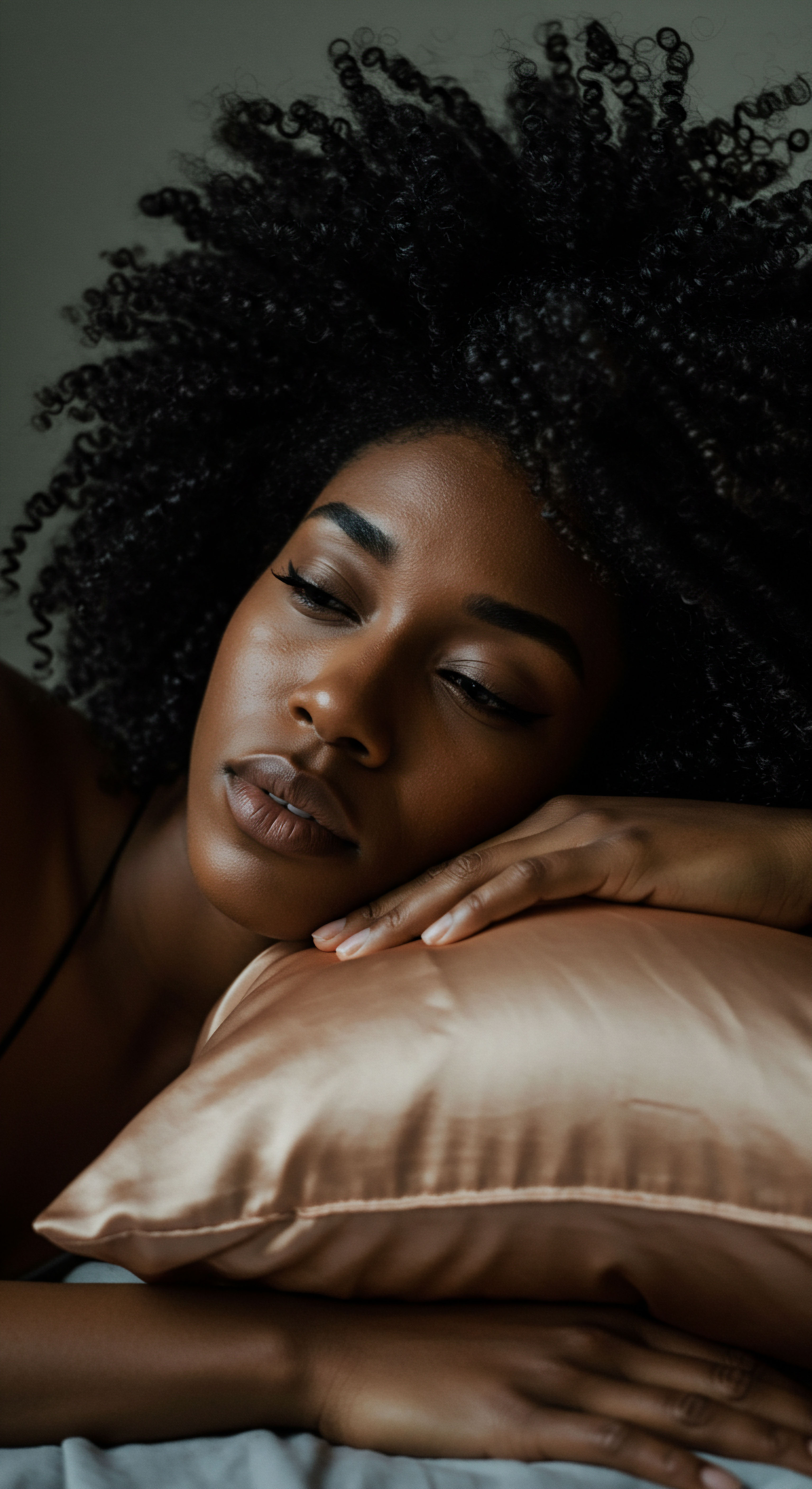
Can Acid Rinses Help Reduce Mineral Buildup?
Acidic rinses, such as diluted apple cider vinegar or citric acid solutions, serve a dual purpose. Firstly, they help to lower the pH of the hair, encouraging the cuticles to lie flatter. This smoother surface not only enhances shine but also makes it more challenging for new mineral deposits to adhere. Secondly, certain acids, particularly citric acid, have been shown to effectively bind with calcium salts, helping to dissolve and remove existing mineral accumulation.
A study highlights that citric acid, with its specific chemical structure, is particularly adept at forming soluble calcium salts, making it a useful ingredient in hair treatments aimed at mineral removal. Incorporating an acidic rinse after cleansing can be a gentle yet effective way to manage mineral adherence, especially for those who prefer a more natural approach or as a regular step between more intensive chelating treatments.
| Mineral Calcium |
| Primary Impact on Hair Dullness, stiffness, film on hair, reduced lather |
| Porosity Interaction Binds to negatively charged hair, lifts cuticles, makes hair feel rough, especially high porosity |
| Mineral Magnesium |
| Primary Impact on Hair Similar to calcium, contributes to dullness and rigidity |
| Porosity Interaction Accumulates on hair surface, contributes to loss of elasticity |
| Mineral Iron |
| Primary Impact on Hair Discoloration (reddish tint), dryness, weakened strands |
| Porosity Interaction Can cause oxidative damage, particularly within high porosity hair |
| Mineral Copper |
| Primary Impact on Hair Discoloration (greenish tint, especially on lighter hair), interference with color treatments |
| Porosity Interaction Participates in "metal-induced radical chemistry" during coloring, affecting dye results |
| Mineral Understanding these mineral interactions is vital for targeted hair care. |
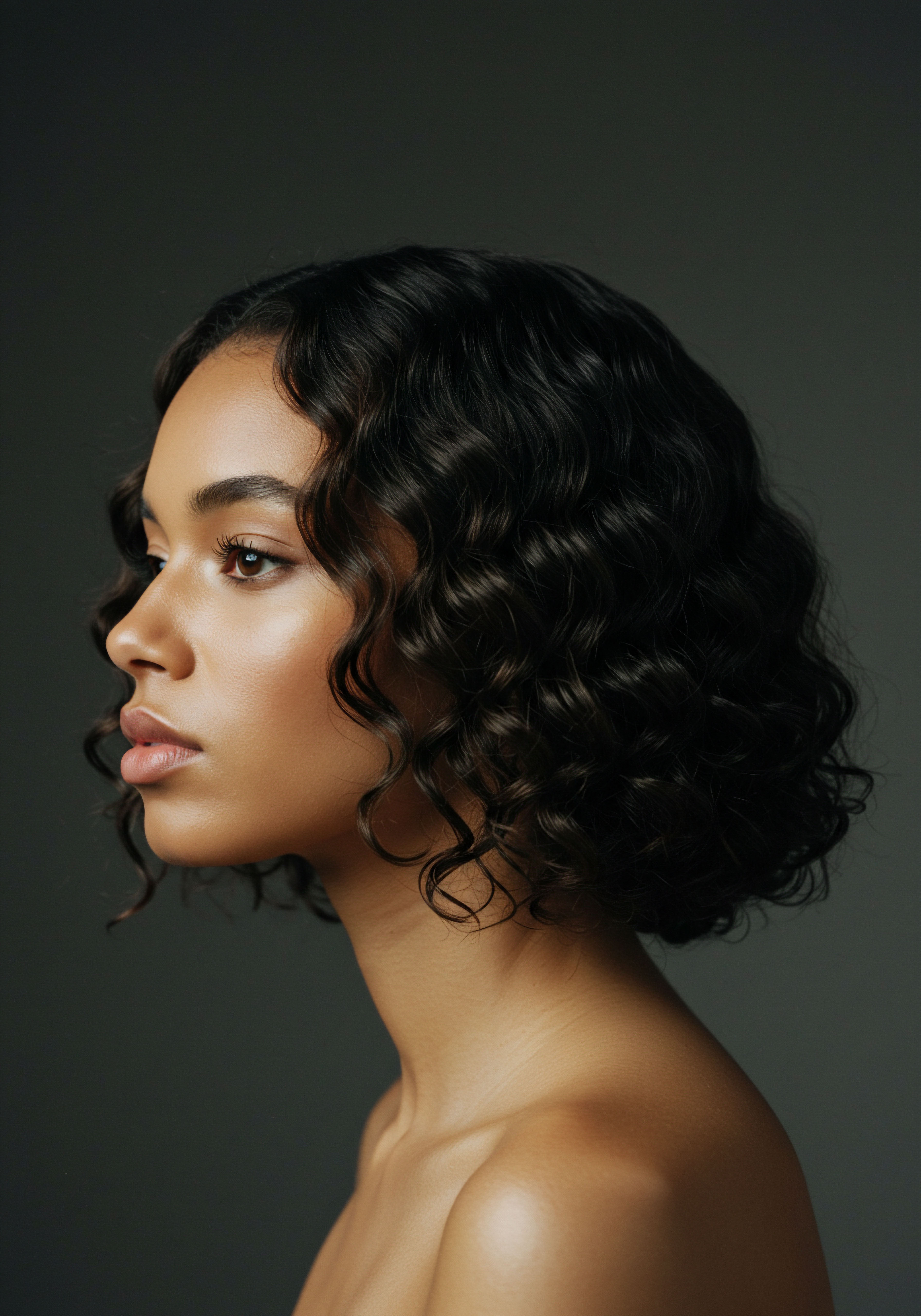
Relay
Our understanding of hair’s interaction with minerals deepens as we consider the broader narrative, extending beyond daily rituals to the echoes of cultural wisdom and the intricate dance of environmental factors. The impact of porosity on mineral accumulation in textured hair is not a singular phenomenon, but a complex interplay woven into the fabric of human history and our surroundings. This section invites a deeper contemplation, moving past surface-level observations to uncover the profound connections that shape our hair’s response to the world, drawing on research and ancestral practices that offer compelling insights.
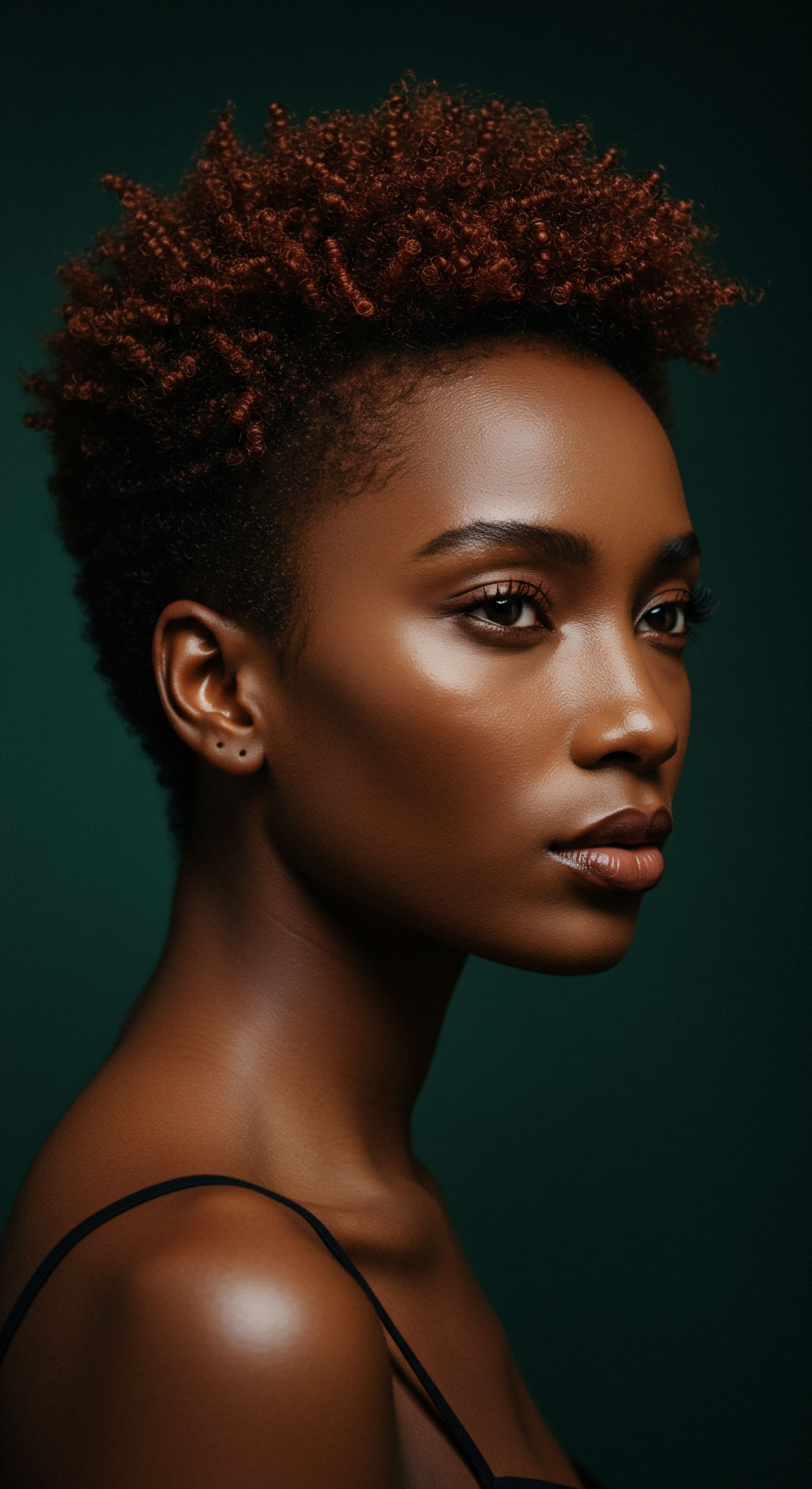
The Historical Echoes of Water and Hair
Across civilizations, the relationship between people and their water sources profoundly shaped hair care traditions. Before modern plumbing and water treatment, communities relied on local wells, rivers, and collected rainwater, each with its own unique mineral profile. Ancestral practices often adapted to these conditions, sometimes unknowingly mitigating the effects of hard water.
For instance, ancient Egyptian hair care involved ingredients like henna and beeswax, not just for aesthetic purposes but also to provide a protective layer against environmental stressors, including potentially mineral-rich water. In ancient India, Ayurvedic texts detailed the use of ingredients like Amla, Shikakai, and Neem for cleansing and nourishing hair. These natural elements often possessed properties that could bind to impurities or help balance the hair’s pH, offering a form of gentle chelation or cuticle smoothing long before the science was understood.
The Yao women of Huangluo village in China, renowned for their incredibly long hair, traditionally used fermented rice water, which contains vitamins, minerals, and antioxidants, for rinsing. Rice water’s inositol has been shown to penetrate the hair shaft, potentially strengthening it and protecting it from damage, a practice that subtly addresses environmental interactions.
These historical approaches, born of necessity and passed down through generations, offer a poignant reminder that human ingenuity has long sought harmony with natural elements, even when the underlying scientific mechanisms remained a mystery. They illustrate a collective, often intuitive, wisdom regarding hair health in diverse water environments.
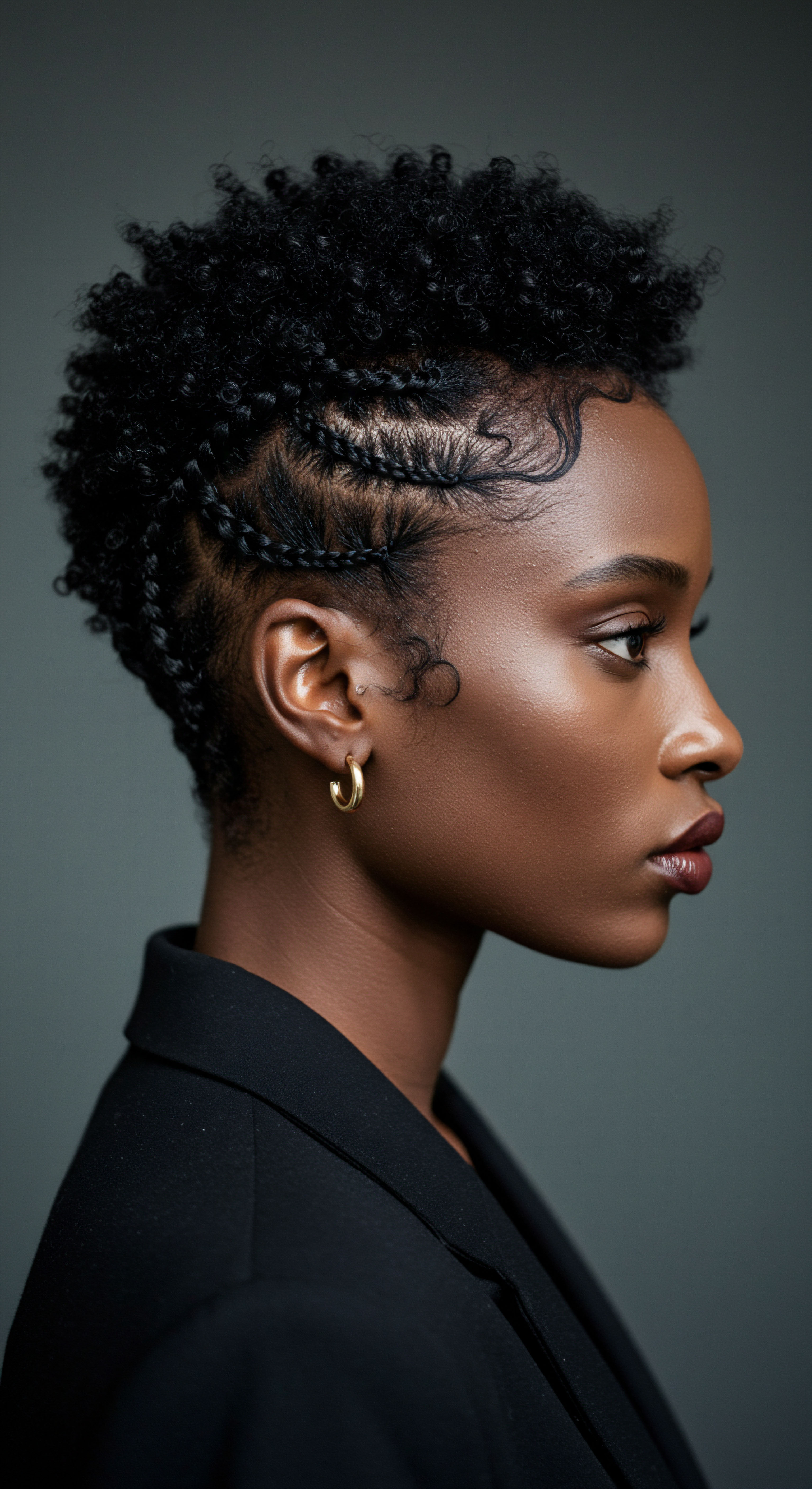
Beyond the Tap ❉ Environmental and Lifestyle Factors
The water flowing from our taps is only one piece of the puzzle. Our geographical location, the very air we breathe, and even our internal physiology contribute to the mineral story of our hair.
Different regions boast distinct water compositions. For example, areas with limestone or chalky bedrock typically have harder water due to higher calcium and magnesium concentrations. This means individuals living in such regions are naturally exposed to greater mineral deposition on their hair, making porosity a more critical factor in their hair health journey.
Beyond water, air pollution, containing particulate matter and heavy metals, can also settle on the hair and scalp, contributing to buildup and potentially impacting hair health. While direct mineral accumulation from air is typically less significant than from water, it adds to the overall burden the hair must contend with.
Interestingly, internal factors also play a subtle role. While hair mineral analysis is not always a precise indicator of the body’s overall nutritional status due to numerous variables, hair does absorb various chemicals and minerals from the body through blood vessels at the follicle base. Studies on hair mineral content have noted that concentrations of some minerals, like calcium, can vary significantly between individuals and may be influenced by environmental and medical factors. This hints at a deeper, systemic connection between our internal environment and the composition of our hair.

The Scientific Nexus ❉ Porosity, Minerals, and Hair Integrity
The interaction between hair porosity and mineral accumulation extends to the very structural integrity of the hair strand. When minerals, particularly calcium and magnesium, deposit on the hair shaft, they do not merely sit on the surface. They can bind to the negatively charged keratin proteins that form the hair’s structure. This binding can lead to several undesirable outcomes:
- Reduced Elasticity ❉ The mineral coating can make hair feel stiff and less pliable, diminishing its natural bounce and resilience. This rigidity makes hair more susceptible to breakage, especially for textured strands that rely on flexibility to resist damage from manipulation.
- Oxidative Damage ❉ Certain minerals, such as copper and iron, can catalyze reactions that generate free radicals on the hair shaft, particularly when exposed to light or styling chemicals. This oxidative stress can degrade the hair’s protein structure over time, weakening it from within. High porosity hair, with its more open cuticles, may allow these reactive minerals deeper access to the cortex, potentially accelerating damage.
- Interference with Hair Treatments ❉ Mineral deposits can create a barrier that prevents styling products, conditioners, and even chemical treatments like color or relaxers from penetrating effectively. This means that efforts to hydrate, strengthen, or alter the hair may yield diminished results, as the active ingredients cannot reach their intended targets.
A study conducted in 2018 exposed hair samples to hard water for 10 minutes every other day over three months. The findings indicated a significant decrease in the Tensile Strength of the hard water-exposed hair samples when compared to those exposed to deionized water or no water at all. This suggests that prolonged exposure to hard water, even in seemingly short daily increments, can compromise the hair’s structural resilience, making it more prone to breakage under tension. While this study did not specifically isolate textured hair, the principle of mineral deposition weakening the hair shaft is highly relevant, given textured hair’s often delicate nature and propensity for dryness.
The influence of water on hair extends beyond daily washing, with environmental factors and even internal physiology playing a part.
The nuances of this interaction are complex. Research suggests that while mineral deposits primarily appear on the outer cuticle, they can also be found in the inner layers of the hair, like the cortex, especially in damaged or high porosity hair. This deeper penetration means the effects of mineral accumulation are not merely superficial but can impact the hair’s core strength and health.
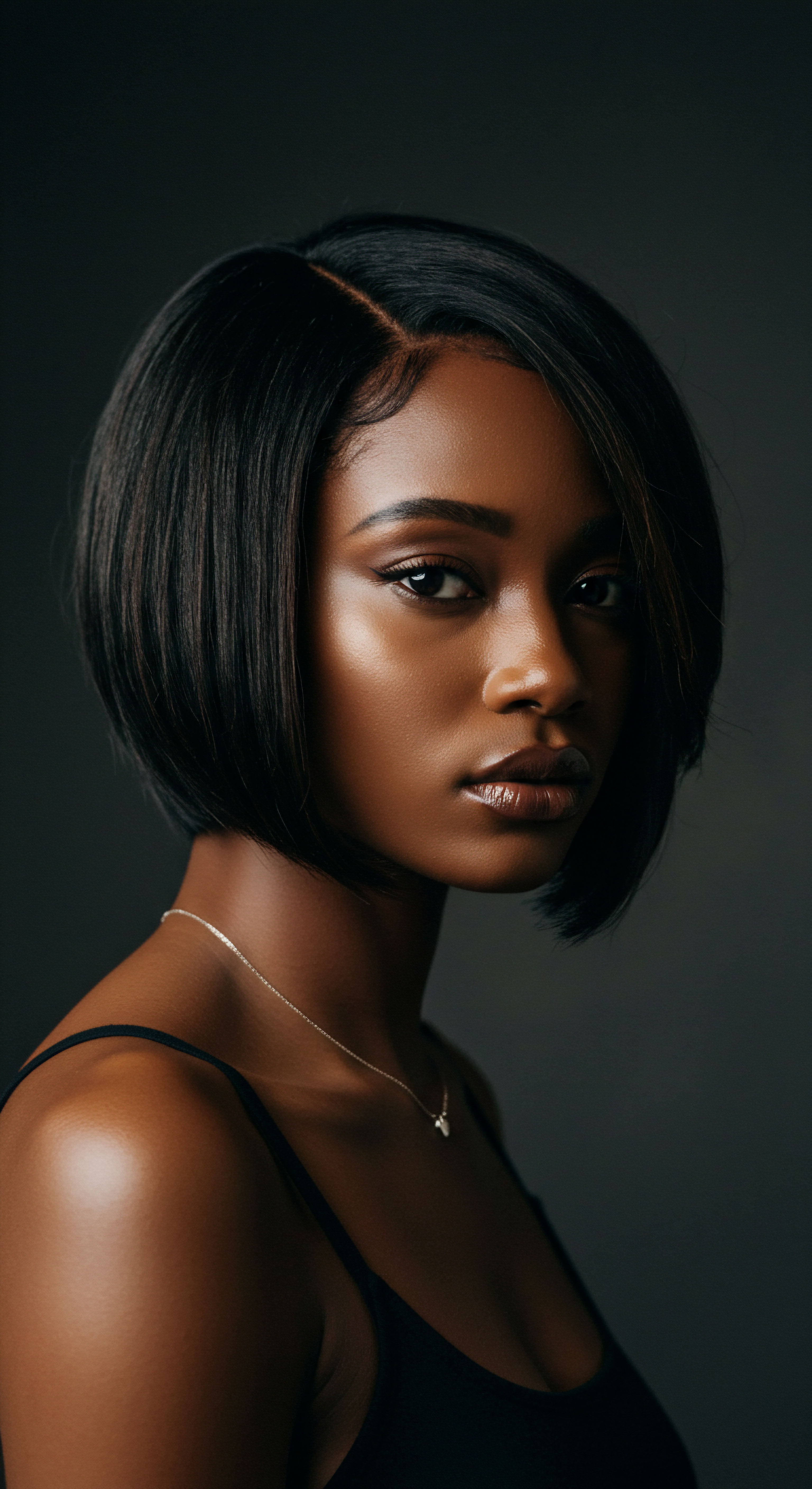
Reflection
Our journey through the intricate world of porosity and mineral accumulation in textured hair reveals a profound truth ❉ hair care is a continuous dialogue, a thoughtful dance between our intrinsic selves and the world around us. It is a conversation steeped in science, echoed by history, and shaped by our daily practices. Understanding the nuanced impact of water’s mineral content on hair’s porosity allows us to move beyond superficial solutions, guiding us toward choices that genuinely honor the unique character of textured strands. This knowledge empowers us to nurture our hair with intention, fostering its strength, resilience, and radiant authenticity, truly celebrating every coil and curl.
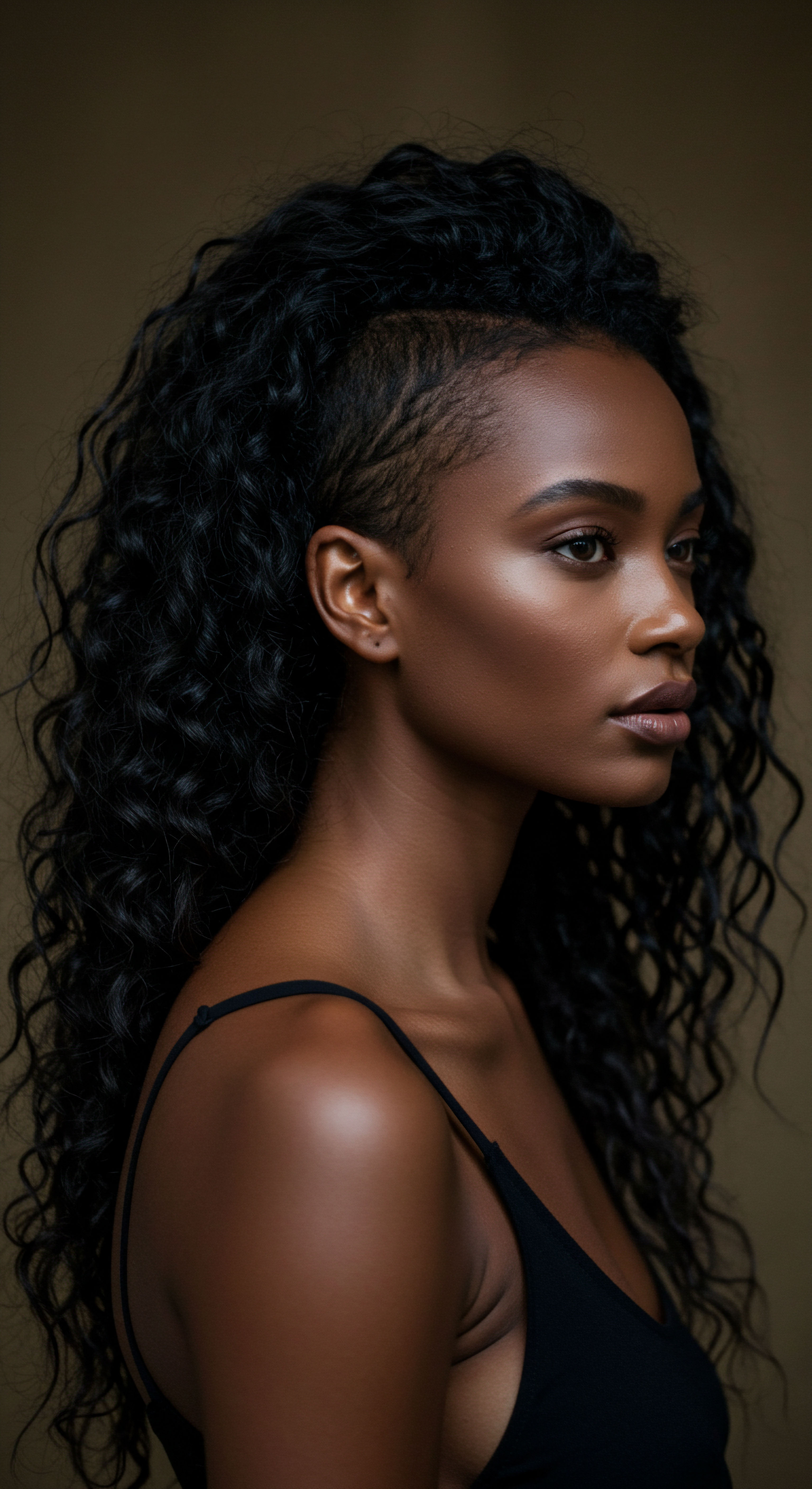
References
- Chandrashekar, B. S. (2018). IADVL Textbook of Trichology. Jaypee Brothers Medical Publishers.
- Bouillon, C. & Wilkinson, J. (Eds.). (2005). The Science of Hair Care. CRC Press.
- McMichael, A. J. & Hordinsky, M. K. (Eds.). (2017). Hair and Scalp Disorders ❉ Medical, Surgical, and Cosmetic Treatments (2nd ed.). CRC Press.
- Srinivasan, G. & Rangachari, S. C. (2016). Scanning electron microscopy of hair treated in hard water. International Journal of Dermatology, 55(11), e344-e346.
- Luqman, S. et al. (2013). Effects of hard water on hair. International Journal of Trichology, 5(3), 137-139.
- Mérigoux, H. et al. (2003). Evidence for various calcium sites in human hair shaft revealed by sub-micrometer X-ray fluorescence. Journal of Structural Biology, 142(1), 22-31.
- Trüeb, R. M. (2015). Nutrition for Healthy Hair ❉ Guide to Understanding and Proper Practice. Springer.
- Ray, D. (2016). What Is GOOD HAIR? ❉ A Simplified Trichology Manual. CreateSpace Independent Publishing Platform.
- Tosti, A. (2018). Hair and Scalp Treatments ❉ A Practical Guide. CRC Press.